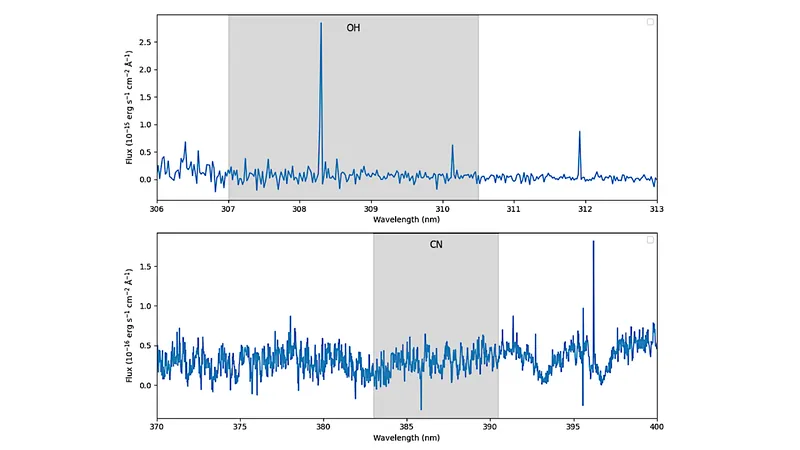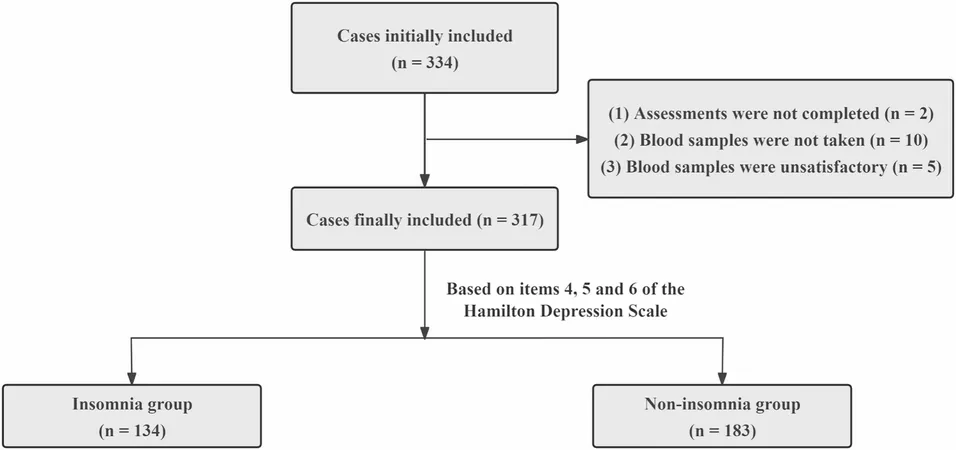
Unveiling the Secrets of Comet C/2025 N1: A Glimpse into Our Cosmic Origins
2025-07-21
Author: Noah
Exploring the Wonders of Comets
Comets serve as celestial time capsules, preserving clues about the early Solar System's formation and evolution. Their unique compositions can tell us a lot about the processes that shaped our planetary neighborhood.
Insights from Spectroscopy
Recent studies have focused on the newly discovered comet C/2025 N1, employing optical and near-infrared spectroscopy to unlock its secrets. Utilizing the state-of-the-art X-shooter at the European Southern Observatory's Very Large Telescope, researchers captured a medium-resolution spectrum ranging from 300 to 2500 nm.
Measuring Activity Levels and Chemical Composition
The analysis revealed that the comet exhibits activity, though only upper limits for certain gases were determined. Specifically, the production rates of hydroxyl (OH) and cyanogen (CN) are estimated at 8.0×10²⁴ s⁻¹ and 4.9×10²³ s⁻¹, respectively. The spectral data obtained also suggested characteristics typical of D-type asteroids and outer Solar System bodies.
A Team of Pioneering Researchers
This groundbreaking work was carried out by a team of astronomers including A. Alvarez-Candal, J. L. Rizos, and others dedicated to advancing our knowledge of celestial phenomena.
Why It Matters
Understanding comets like C/2025 N1 not only enhances our grasp of the Solar System’s history but also offers insights into the materials that could potentially support life on other planets. As we continue to explore these distant visitors, we unlock the mysteries of the cosmos and our place within it.









 Brasil (PT)
Brasil (PT)
 Canada (EN)
Canada (EN)
 Chile (ES)
Chile (ES)
 Česko (CS)
Česko (CS)
 대한민국 (KO)
대한민국 (KO)
 España (ES)
España (ES)
 France (FR)
France (FR)
 Hong Kong (EN)
Hong Kong (EN)
 Italia (IT)
Italia (IT)
 日本 (JA)
日本 (JA)
 Magyarország (HU)
Magyarország (HU)
 Norge (NO)
Norge (NO)
 Polska (PL)
Polska (PL)
 Schweiz (DE)
Schweiz (DE)
 Singapore (EN)
Singapore (EN)
 Sverige (SV)
Sverige (SV)
 Suomi (FI)
Suomi (FI)
 Türkiye (TR)
Türkiye (TR)
 الإمارات العربية المتحدة (AR)
الإمارات العربية المتحدة (AR)